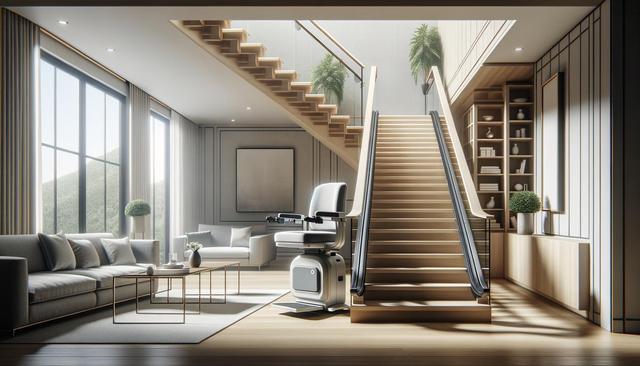Understanding the Need for Effortless Mobility
Mobility challenges can arise from various conditions, including age-related changes, injuries, or chronic illnesses. For many, the ability to move freely around their own home becomes increasingly difficult, especially when navigating stairs. This reduced mobility not only affects physical movement but also has an emotional impact, often leading to feelings of dependency and frustration. Stairlifts provide a practical answer to these challenges by creating a seamless transition between different levels of the home. By offering effortless mobility, these devices restore a sense of control and independence, allowing users to stay connected with all areas of their living space.
Installing a stairlift is often seen as a proactive step toward maintaining autonomy. Rather than relocating or limiting movement within the home, individuals can continue to enjoy their entire living environment. This is particularly important for those who value aging in place and wish to remain in familiar surroundings for as long as possible.
Enhancing Home Accessibility and Daily Living
One of the standout benefits of stairlifts is their role in improving home accessibility. Whether the home features a straight or curved staircase, modern stairlifts can be customized to fit a variety of architectural layouts. This adaptability ensures that users can access upper floors without the physical strain or risk associated with climbing stairs.
Key ways stairlifts improve home accessibility include:
- Providing a safe and stable seated ride up and down stairs
- Reducing the need for assistance from caregivers or family members
- Allowing uninterrupted access to bedrooms, bathrooms, and other essential areas
These features contribute significantly to a user’s ability to manage daily tasks independently. With improved access, routines such as dressing, grooming, and personal care can be maintained without compromise, further supporting a high quality of life.
Supporting Aging in Place with Confidence
The concept of aging in place has gained increasing attention, as more individuals prefer to grow older in their own homes rather than transition to assisted living facilities. Stairlifts align seamlessly with this goal by offering a supportive mobility solution that minimizes the need for major home renovations or relocations. By integrating a stairlift into the home environment, older adults can continue to live safely and independently, surrounded by familiar comforts and memories.
Benefits of stairlifts for aging in place include:
- Reducing the risk of falls on stairs
- Maintaining access to all levels of the home
- Preserving the emotional well-being associated with staying in a familiar setting
For many families, installing a stairlift is part of a broader strategy to address long-term care needs while honoring personal preferences and dignity.
Stairlift Safety and Peace of Mind
Safety is a fundamental concern when addressing mobility challenges, and stairlifts are designed with this priority in mind. Modern stairlifts incorporate a range of features that ensure secure usage and minimize the risk of accidents. From seat belts and swivel seats to obstruction sensors and backup power options, these technologies work together to provide a reliable and safe experience.
Common stairlift safety features include:
- Seat belts for secure positioning during use
- Swivel seats for easy on and off access
- Footrest sensors to detect obstacles on the stairs
- Battery backup in case of power outages
These elements contribute to a heightened sense of confidence for both users and their families. Knowing that a stairlift offers a safe and dependable way to move between floors can ease concerns and encourage continued independence.
Choosing the Right Mobility Solutions
When considering mobility solutions for the home, it’s important to evaluate personal needs, home layout, and long-term goals. Stairlifts come in a variety of models with different features tailored to specific requirements. Whether dealing with a temporary mobility issue or a more permanent limitation, consulting with a mobility specialist can help identify the most suitable option.
Factors to consider when selecting a stairlift include:
- Type of staircase (straight, curved, narrow)
- User weight capacity and comfort preferences
- Ease of installation and maintenance
- Available safety and support features
By carefully matching the stairlift to the user’s lifestyle and home environment, it becomes a valuable tool for enhancing home accessibility and supporting long-term well-being.
Conclusion: Empowering Independence Through Mobility
For individuals facing mobility challenges, stairlifts offer much more than a means of transportation—they provide a renewed sense of freedom and dignity. Through improved home accessibility, enhanced safety, and alignment with aging in place goals, stairlifts enable users to maintain their independence and enjoy their homes without limitations. As part of a comprehensive approach to mobility solutions, stairlifts stand out as a practical and empowering choice for those seeking effortless mobility and long-term comfort within their living space.




Leave a Reply